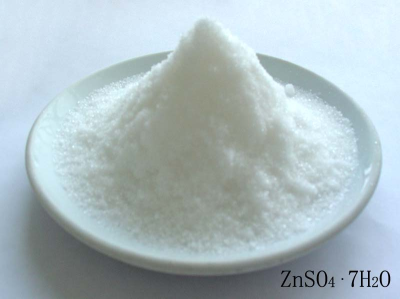







Search:

Zinc sulfate
|
1. $H_2S$ |
|
$Zn^{2+}$ $+S^{2-}$ $\longrightarrow$ $ZnS$ - White gelatinous precipitate - Soluble in dilute mineral acids - Partially soluble in acetic acid - At pH 5 (acetic buffer), the precipitation is total - Sometimes colloidal |
|
2. $(NH_4)_2S$ |
|
$Zn^{2+}$ $+$ $S^{2-}$ $\longrightarrow$ $ZnS$ - White precipitate |
|
3. $KOH$ |
|
$Zn^{2+}+2OH^- \longrightarrow Zn(OH)_2$ - White gelatinous precipitate - Soluble in dilute mineral acids - With an excess of reagent there is formation of a complex ion: $Zn(OH)_2$ $+$ $4OH^-$ $\longrightarrow$ $[Zn(OH)_4]^{2-}$ - Tetrahydroxozincate - Soluble, colorless |
|
4. $NH_3$ |
|
$Zn^{2+}$ $+$ $2OH^-$ $\longrightarrow$ $Zn(OH)_2$ - White precipitate - With an excess of reagent there is formation of a complex ion: $Zn(OH)_2$ $+$ $4NH_3$ $\longrightarrow$ $[Zn(NH_3)_4]^{2+}$ - Tetramminezinc - Easy formation of complex ion - Soluble, colorless |
|
5. $KCN$ |
|
$Zn^{2+}$ $+$ $2CN^-$ $\longrightarrow$ $Zn(CN)_2$ - White precipitate - With a large excess of reagent a complex ion is formed: $Zn(OH)_2$ $+$ $4CN^-$ $\longrightarrow$ $[Zn(CN)_4]^{2-}$ - tétrahydroxozincate - Difficult complex formation, from little $Zn^{2 +}$! - Soluble, colorless |
|
6.$K_4Fe(CN)_6$ |
|
$3Zn^{2+}$ $+$ $2K[Fe(CN)_6]^{3-}$ $\longrightarrow$ $Zn_3K_2[Fe(CN)_6]_2$ - Zinc and potassium hexacyanoferrate - White precipitate - This reaction is applied as follows: To act on a porcelain plate: . hexacyanoferrate(III) solution 2 drops . diethylaniline solution - $ H_2SO_4 $ 2 drops . solution to analyze - 1 drop Hinder all species with redox effect and cations $Cu^{2+},Fe^{2+},Fe^{3+},$$Co^{2+},Ni^{2+},Mn^{2+}$ |